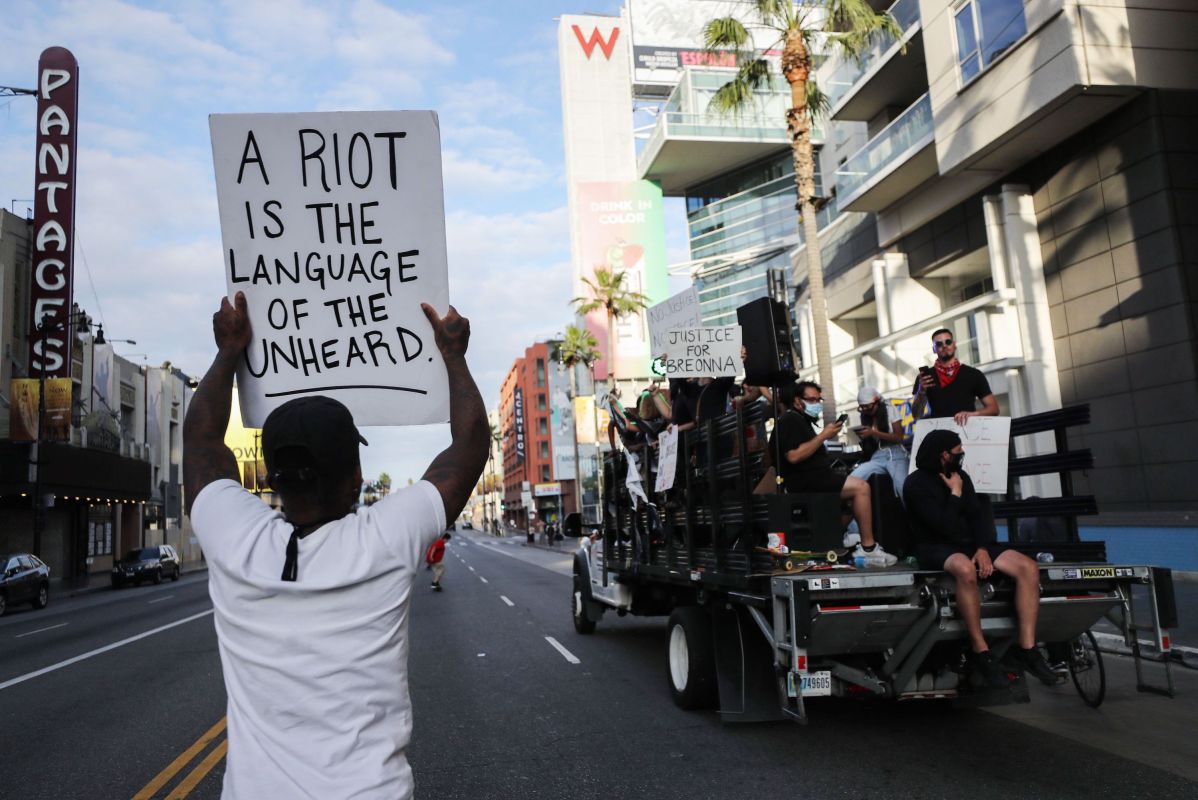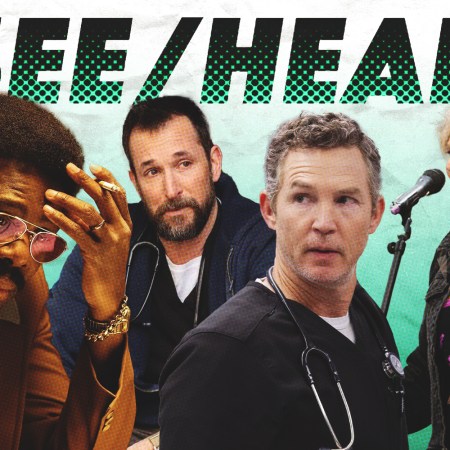On March 3, 1991, four LAPD officers almost beat an unarmed Rodney King to death, clubbing him 56 times. The now-famous grainy video footage was the most violent display of police brutality caught on film until George Floyd’s murder. The difference is: King survived. Floyd did not.
Less than two weeks later, on March 16, 1991, Soon Ja Du, a Korean convenience store owner, shot and killed 15-year-old Black girl Latasha Harlins because she thought Harlins stole orange juice. She did not. But Soon Ja Du only received five years of probation, 400 hours of community service and a $500 fine. Five months later, on April 29, 1992, the jury acquitted the officers. That injustice coupled with the lack of justice for Harlins led to six days of combustible civil unrest in South Central, Downtown L.A. and Hollywood; the 1992 L.A. riots remains the most destructive civil disturbance in US history.
Filmmakers T.J. Martin and Daniel Lindsay, who both won Oscars in 2012 for directing the 2011 feature-length documentary Undefeated, chronicled L.A.’s heightened racial tensions in their Emmy-winning 2017 National Geographic-distributed film LA 92, streamable on Netflix and available for free on YouTube. The film begins and ends with footage from the 1965 Watts riots — another incident that involved a traffic stop, a Black man (Marquette Frye) and bad cops. The film ends with Bill Stout, a reporter for CBS, saying how the Watts riots “may be only a curtain raiser to what could blow up one day in the future. What shall it avail our nation if we can place a man on the moon but cannot cure the sickness in our cities?”
The parallels between the 1992 riots and our current unrest are uncanny: William Barr was Attorney General. It was an election year, and like Trump, President George Bush ignored America’s racial tensions (it may have cost him re-election). Entire neighborhoods burned to the ground. More than 11,000 people were arrested. Maybe the biggest difference between then and now is the conflict has moved outside L.A. to all 50 states. Like Ava DuVernay’s 13th, Raoul Peck’s I Am Not Your Negro and Destin Daniel Cretton’s Just Mercy, LA 92 has re-entered the zeitgeist at a pivotal moment in American history.
“I’m glad to see that the film is being used as a tool to help facilitate dialogue and that very much so is usually the best case outcome for any piece of work that I have engaged with thus far in my career,” Martin tells InsideHook. “In that sense it’s really wonderful, but I’m a little concerned that we’re having the same conservations now from the footage that I was sourcing when we were cutting the film, from ‘92 and ‘65. We’re even still using a little of the same rhetoric in terms of trying to process our understanding of this.”
The film only uses archival footage to tell the story — no interviews and no narration. “In that way it’s a little more like an art piece,” he says. “You engage with it. It’s designed to be an emotional and visceral experience. So that when you descend inside of it, you’re wrestling with these conflicts of emotions. We’re not going to have an easy out for you. That’s what dictated our approach.”
Martin, Lindsay and archivist Ben Piner sifted through 1,700 hours of footage, many of which were graphic. The fact the viewer is forced to watch real human emotions unravel, as well as the extent of the violence, is what makes the film so potent. While Martin was editing the film in the summer of 2016, police brutality resurfaced: cops murdered Alton Sterling and Philando Castile, a day apart, in two different cities.
“It was surreal to be digesting the news every morning before you go to work and then go to work and be editing a film, that again, where the language is the same in which we’re processing the same issue,” he says. “I feel like I’m in this nightmarish feedback loop.”
This month, L.A.’s protests and looting — people stole surfboards from a shop in Santa Monica, and others looted stores on Rodeo Drive — once again catapulted the city into national news. However, this time, protestors decided to leave South Central untouched and enter affluent white neighborhoods. “Probably the smartest thing the organizers have done is to keep it out of neighborhoods that are most at-risk from not recovering,” he says. “Systemic racism is fundamentally attached to capitalism. It’s a system of power where there are haves and haves nots, and in this country and most of the world, the haves happen to be white. You can’t really pull them a part. I don’t understand the surfboard thing, but I do understand the ‘let’s loot some groceries so I can take care of my family.’”
Martin has been impressed with so many people taking to the streets, but he wonders if the current momentum will last, especially when people go back to work. “My bigger fear is, black pain just becomes trendy,” he said. “Black voices get leveraged, and people are like, ‘Huh. You’re kind of right.’ The Black life is not nearly as valued and then that trend goes away. It’s been on the same loop since the birth of the nation.”
For him, it’s not good enough to just defund the police or have the NFL say it’s antiracist. “I still think there’s a ton of work to be done in terms of changing the psychology of our nation. We don’t face our history. Germany faces its history and is constantly, constantly educating themselves about that painful moment and is healing that wound by facing it all the time, and we don’t do that. As a result, there’s always divide of ideology. Why is the Confederate flag constantly being celebrated?”
He also takes issue with Hollywood’s new-found urgency in hiring more Black creatives and he hopes it’s just not executives “checking a box.”
“I still want to be seen and acknowledged for the merits of my work and my skill set, and I happen to be a person of color,” he says. “And in my particular case I happen to be mixed, and also in my particular case my parents happened to have me when they were 19 and they were in a punk rock band [Bam Bam], so I bring a particular POV to everything I do. But it’s still based off the merits of my skill set, and all my experience gets funneled into that. I don’t think that’s the way a lot of people are thinking. I think there are some, but that’s kind of the continued education we need to do in the entertainment business.”
He and Lindsay’s next project is a doc on Tina Turner. But while he’s knee-deep in editing it, he’s still immersed in conversations about LA 92, mainly how America avoids repeating the events from 1992, 1965 and, well, 2020.
“The film from what I’ve seen has had resonance with people of all different ideologies,” Martin says. “Meaning, you may have a different way of thinking about how to find a solution to some of the problems, but your experience of going through the film, most people come out recognizing that we can’t do that again and we need to break this cycle, and the question is how. And that’s where I think there becomes divergent thought.”
However, like what’s happening now, the film leaves more questions than answers. “I find the most compelling work is to create a space to ask critical questions so the viewers are engaging with their emotions and having an internal dialogue with themselves and the work,” he says. “It’s not my job to answer questions. My job is to pose [them].”
This article appeared in an InsideHook newsletter. Sign up for free to get more on travel, wellness, style, drinking, and culture.

























